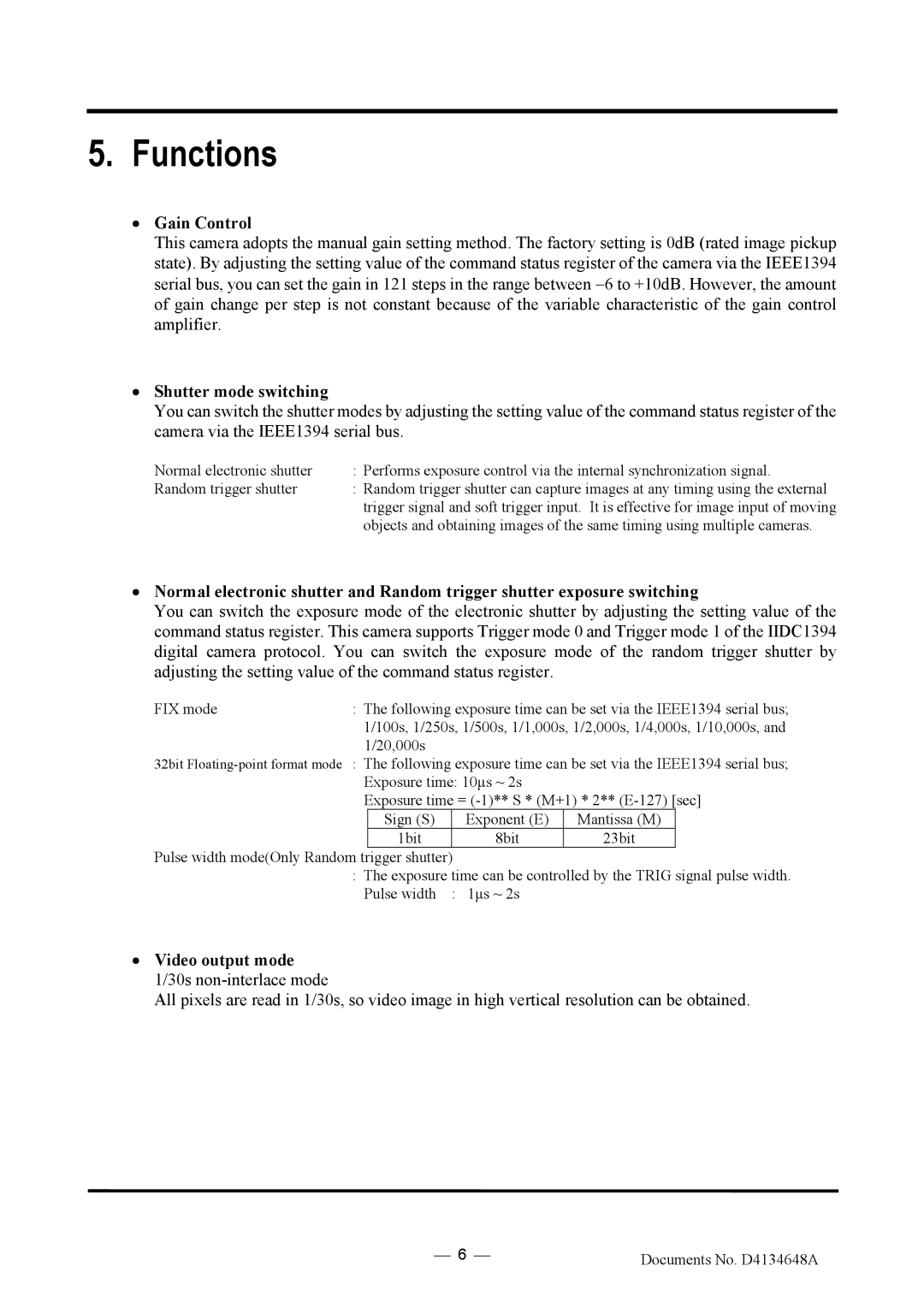
5.Functions
•Gain Control
This camera adopts the manual gain setting method. The factory setting is 0dB (rated image pickup state). By adjusting the setting value of the command status register of the camera via the IEEE1394 serial bus, you can set the gain in 121 steps in the range between −6 to +10dB. However, the amount of gain change per step is not constant because of the variable characteristic of the gain control amplifier.
•Shutter mode switching
You can switch the shutter modes by adjusting the setting value of the command status register of the camera via the IEEE1394 serial bus.
Normal electronic shutter | : Performs exposure control via the internal synchronization signal. |
Random trigger shutter | : Random trigger shutter can capture images at any timing using the external |
| trigger signal and soft trigger input. It is effective for image input of moving |
| objects and obtaining images of the same timing using multiple cameras. |
•Normal electronic shutter and Random trigger shutter exposure switching
You can switch the exposure mode of the electronic shutter by adjusting the setting value of the command status register. This camera supports Trigger mode 0 and Trigger mode 1 of the IIDC1394 digital camera protocol. You can switch the exposure mode of the random trigger shutter by adjusting the setting value of the command status register.
FIX mode | : The following exposure time can be set via the IEEE1394 serial bus; | |||||
| 1/100s, 1/250s, 1/500s, 1/1,000s, 1/2,000s, 1/4,000s, 1/10,000s, and | |||||
| 1/20,000s |
|
|
| ||
32bit | : The following exposure time can be set via the IEEE1394 serial bus; | |||||
| Exposure time: 10µs ~ 2s |
|
| |||
| Exposure time = | |||||
|
| Sign (S) |
| Exponent (E) | Mantissa (M) |
|
|
| 1bit |
| 8bit | 23bit |
|
Pulse width mode(Only Random trigger shutter) |
|
|
| |||
| : The exposure time can be controlled by the TRIG signal pulse width. | |||||
| Pulse width : | 1µs ~ 2s |
|
| ||
•Video output mode 1/30s
All pixels are read in 1/30s, so video image in high vertical resolution can be obtained.
6 | Documents No. D4134648A |
|
